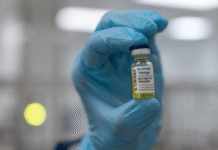The birth of the nitrogen fertiliser via the Haber-Bosch process is one of the world’s greatest contributions to modern agriculture.
It has tremendously changed the face of agriculture since the days of the synthetic nitrogen fertiliser – known as an essential crop nutrient – made vastly available and affordable to grow more crops, which eventually led to the practice of modern agriculture as seen today.
In the 1770’s scientists thought nitrogen to be a lifeless compound or ‘azote’ which represents its inability to support life on its own.
However, the scenario changed back in the 20th century, ever since Fritz Haber the scientist from Germany discovered a way of producing synthetic ammonia through a chemical reaction between nitrogen sourced directly from air and hydrogen by using a simple iron catalyst under intense pressure and temperature.
Fritz Haber received a Nobel Prize in Chemistry in 1919 for this invention. Haber’s method was further improved by Carl Bosch by scaling up the process using catalyst and high-pressure
















